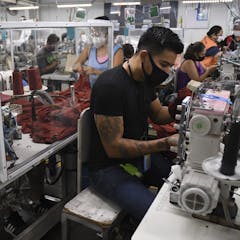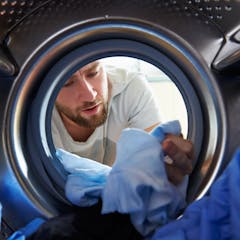
Articles on Textiles
Displaying 1 - 20 of 45 articles

Wool, cotton, polyester? Here’s what we found when it comes to choosing the right textiles for sleep.

After spending more than 500 hours embroidering in an attempt to come to terms with the bushfires of 2019-2020, I discovered that while no news may be good news, ‘slow news’ is even better.

The bright pink fabric swaying gently in the wind stands in stark contrast to the grey tones of the brutalist architectural complex.

Textiles have a deceptive simplicity that conceals their potential for subversion and political dissent.

Relaxing ‘rules of origin’ restrictions in an existing trade deal could add tens of thousands of jobs in Central America.

Next time you do your laundry, think like an astronaut – wash your clothes as little as possible.

Every wardrobe tells a story and reconnecting with the clothes you already own could reduce your need to buy more fast fashion. Here are three ways to fall back in love with your wardrobe.

New research on Ilorin in Nigeria provides insights into regional socio-political developments prior to the 19th century.

Colonial settlers made myriad objects with problematic portrayals of First Nations people. Now, a number of artists are using these objects in their work to retell these stories.

It is important to study clothing items to pinpoint the triggers for sensory over-stimulation.

The production, use and end-of-life of clothing all have an impact on our health. But greater ecological awareness could turn the tide.

International career mobility can give people valuable knowledge and expertise to be used in their home country.

Polylactic acid – a popular bioplastic – does not readily break down when released into the ocean, and could disrupt marine ecosystems

A study shows that exposure to polyester microfibres inhibits growth in mussels.

By understanding clothing care labels, you can extend the lifespan of your clothes.

The barriers and benefits to reviving the UK textile industry.

What started out as an instinctive and private response to trauma has become a collective process of grieving and commemoration.

Together with higher cotton production, nanotextile products can boost Nigeria’s textile industry and the economy.

Tests found PFAS in school uniforms, pillows, upholstered furniture and several other items that are often next to children’s skin and near their noses and mouths.

From fibre to fabric. The process of making textiles has been important to humans for almost 35,000 years.
